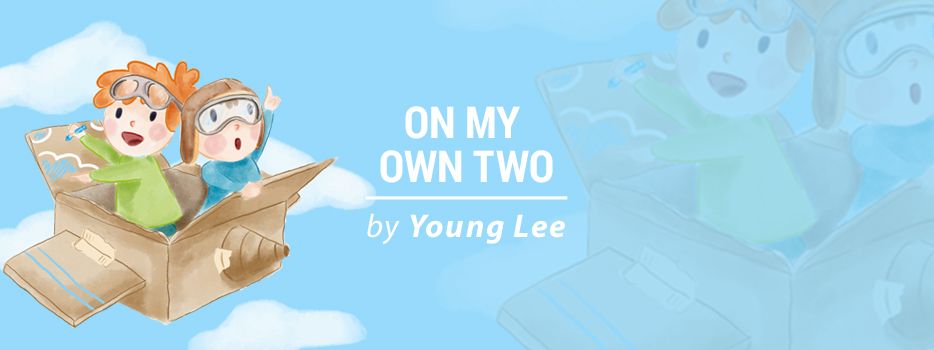Learning to Actively Pursue the Light at the End of the Tunnel

Many folks are familiar with the saying that there is always light at the end of the tunnel. It’s a nice expression that refers to the fact that unfortunate circumstances are often temporary. But author and retired Navy SEAL David Goggins writes in his book, “Can’t Hurt Me: Master Your Mind and Defy the Odds,” that the light at the end of the tunnel doesn’t always appear if your eyes have adjusted to the darkness.
I picked up Goggins’ book, which is part memoir and part self-help, a few weeks ago after four people recommended it to me, including a few folks in the Charcot-Marie-Tooth (CMT) community. While I ultimately didn’t love the book and am incapable of wholeheartedly recommending it, Goggins’ addendum to the famous tunnel imagery resonated with me and continues to ring true as I learn to adapt and remain hopeful while living with CMT.
As I’ve written before, I’ve known that CMT was and would continue to be part of my life since I was very young. For a long time, I was fairly fatalistic in my approach to this chronic condition. Oftentimes, I felt that CMT just sucked and would continue to affect my life, largely for the worse, and there was little I could do about it.
If you were to compare my fatalistic attitude toward CMT to a dark tunnel, it would be fair to say my eyes had adjusted to that darkness. I was too complacent with being passive in my approach to managing CMT.
Sure, I did physical therapy and some exercises specifically geared toward CMT as a youngster, but that was mostly because my parents sent me to physical therapy and I had little say in the matter. My heart wasn’t really in it.
It’s truly tempting to settle and passively accept tough times — to buckle up and just go along for the ride. Goggins describes this as being “numb” and “going through the motions.”
However, in the past few years, I’ve tried to be more active by seeking the light in all situations. And I’ve learned that finding hope and actualizing a better future takes faith, a curious mind, and some effort.
After all, we need faith to picture a better future because none of us knows what the future has in store, and there are many things we may not fully understand. I don’t want to advocate for blind faith, but that’s why it’s important to remain curious and seek out new information and reasons to keep hope alive.
In the context of CMT, this has meant continuing to learn more about diet, exercise, and developments in our understanding of this disease in addition to reading perspectives and narratives from others in the CMT community as well as the larger disability community. I pursue hope by doing such things.
And of course, it’s important to act on faith and knowledge gained. That means investing in the future, practicing self-care, going to the gym, eating well, making connections, and following and supporting promising research.
Indeed, having faith and maintaining hope takes some work. When I’m in a dark tunnel, whether triggered by CMT or not, it’s important to continue moving forward. Being numb and passive can make that dark tunnel a bit longer, and so can isolation and withdrawal. It’s important to remember not to let your eyes adjust to the darkness and not to simply wish for the light, but to actively pursue it.
***
Note: Charcot-Marie-Tooth News is strictly a news and information website about the disease. It does not provide medical advice, diagnosis, or treatment. This content is not intended to be a substitute for professional medical advice, diagnosis, or treatment. Always seek the advice of your physician or other qualified health provider with any questions you may have regarding a medical condition. Never disregard professional medical advice or delay in seeking it because of something you have read on this website. The opinions expressed in this column are not those of Charcot-Marie-Tooth News or its parent company, Bionews, and are intended to spark discussion about issues pertaining to Charcot-Marie-Tooth.






Dana Carroll
Thanks for reminding others that we have a choice in perceiving our situation. Positive hopefullness always best.
Jason Minton
Thank you for the thoughtful and inspiring article. My 10 year old stepson has CMT4J. We embrace the same type of thinking despite his decline from walking to becoming quadriplegic and relying on a ventilator. My wife explained to him that we can either be really sad and loathe in self-pity, or we can take the setbacks head-on. She further explains that our options are to approach obstacles head-on, go around, or retreat. Luckily, retreat is not in our little guys vocabulary. To that point, my background is in technology and any time we face a new obstacle, we face the obstacle head-on and use technology as tool to help him break through some of the obstacles. My stepson has taught me more about life and never losing hope, than anyone I've ever known. My hope is that someday, we will be able to share the technology workflows and technology interventions that have assisted him in going to school, playing video games, traveling, and overall just being a kid. We are always stronger, together. Thank you again for the fantastic article.
Debi
Hi and thank you
i was recently diagnosed with CMT4 in April 2021.. looking for anyone with information or have this diagnosis also.